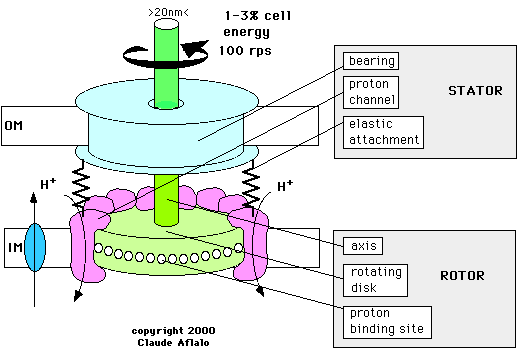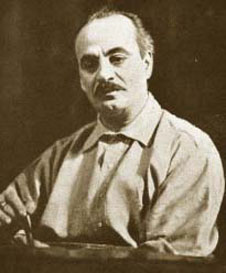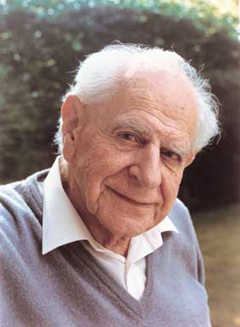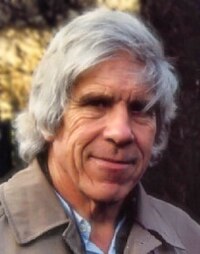 去年我在一个旧帖里介绍过沃森测试,我在Matt Ridley的The Red Queen里读到它,该测试揭示了人类理性的一个很有意思的特征:逻辑结构完全不变的一个问题,当它用抽象符号表达时,大部分人不会解答,当它被描述为侦探型问题(即事实探索型的)时,多数人很快找到正确答案,当它被描述为社会规则型问题时,多数人迅速给出答案,但答案与被测试者的身份强烈相关,此时逻辑能力靠边站了。
去年我在一个旧帖里介绍过沃森测试,我在Matt Ridley的The Red Queen里读到它,该测试揭示了人类理性的一个很有意思的特征:逻辑结构完全不变的一个问题,当它用抽象符号表达时,大部分人不会解答,当它被描述为侦探型问题(即事实探索型的)时,多数人很快找到正确答案,当它被描述为社会规则型问题时,多数人迅速给出答案,但答案与被测试者的身份强烈相关,此时逻辑能力靠边站了。
Matt Ridley - The Red Queen: Sex and the Evolution of Human Nature Chapter 10 THE INTELLECTUAL CHESS GAME (Sect7) GOSSIP'S GRIP
…… One of the most striking pieces of evidence for deception's role in communication comes from experiments that Leda Cosmides did when at Stanford University and that Gerd Gigerenzer and his colleagues did at Salzburg University. There is a simple logical puzzle called the Wason test, which people are bafflingly bad at: It consists of four cards placed on the table. Each card has a letter on one side and a number on the other. At present the cards read as follows: D, F, 3, 7. Your task is to turn over only those cards that you need to in order to prove the following rule to be true or false: get card has a D on one side, then it has a 3 on the other.
When presented with this test, less than one-quarter of Stanford students got it right, an average performance. (The right answer, by the way, is D and 7.) But it has been known for years that people are much better at the Wason test if it is presented differently. For example, the problem can be set as follows: "You are a bouncer in a Boston bar, and you will lose your job unless you enforce the following law: If a person is drinking beer, then he must be over twenty years old." The cards now read: "drinking beer, drinking Coke, twenty-five years old, sixteen years old." Now three-quarters of the students get the right answer: Turn over the cards marked "drinking beer" and "sixteen years old". But the problem is logically identical to the first one. Perhaps the more familiar context of the Boston bar is what helps people do better, but other equally familiar examples elicit poor performance. The secret of why some Wason tests are easier than others has proved to be one of psychology's enduring enigmas.
Cosmides and Gigerenzer have solved the enigma. If the law to be enforced is not a social contract, the problem is difficult—however simple its logic; but if it is a social contract, like the beer-drinking example, then it is easy. In one of Gigerenzer's experiments, people were good at enforcing the rule "If you take a pension, then you must have worked here ten years" by wanting to know what wason the back of the cards "worked here eight years" and "got a pension"—so long as they were told they were the employer. But if told they were an employee and still set the same rule, they turned over the cards "worked here for twelve years" and "did not get a pension," as if looking for cheating employers—even though the logic clearly implies that cheating employers are not infringing the rule.
Through a long series of experiments Cosmides and Gigerenzer proved that people are simply not treating the puzzles as pieces of logic at all. They are treating them as social contracts and looking for cheats. The human mind may not be much suited to logic at all, they conclude, but is well suited to judging the fairness of social bargains and the sincerity of social offers: It is a mistrustful Machiavellian world. ……
当时我评论到:
如果告诉你消费品价格相对于原材料暴跌,大伙儿很可能拍手叫好,但如果告诉你原材料价格暴涨,你就很可能觉得事情很糟糕,其实是一码事。 类似的例子很多,人的理性就是如此。
Leda Cosmides的原始论述可参见:The logic of social exchange: Has natural selection shaped how humans reason? Studies with the Wason Selection task.
人的所谓“智力”,严重依赖于的问题情境,一旦脱离熟悉的情境,天才也可以变得十分愚蠢,什么洞察力、判断力、逻辑能力,可以统统丧失殆尽,这方面,哲学家、科学家、精明商人,都未曾免俗。这里再补充个例子,西蒙vs埃利希的十年之赌(摘自:张玉路<经济学家与生态学家的赌博>):
……1980年,美国经济学家朱利安·L·西蒙(Julian L. Simon)在《科学》杂志上大谈他对未来的幸福憧憬。他认为,当前人们颇为担忧的人口快速增长不是危机,而最终将意味着大有裨益于更洁净的环境和更健康的人类。未来的世界将更美好,因为将有更多的人提供更聪明的思想。人类的进步是无限的,因为地球上的资源不是有限的。
西蒙的文章引来了大量愤怒的书信。其中就有斯坦福大学的生态学家保罗·R·埃利希(Paul R. Ehrlich),被激怒的埃利希给西蒙提供了一个简单的计算:地球的资源不得不按当时情况每年以七千五百万人的速度而增加的人口来分配,这超过了地球的“承载能力”——地球上食品、淡水和矿物的储存量。随着资源的更加短缺,商品一定会昂贵起来,这是不可避免的。西蒙以挑战的方式做了答复。他让埃利希选出任何一种自然资源——谷类、石油、煤、木材、金属——和任何一个未来的日期。如果随着世界人口的增长资源将变得更加短缺,那么资源的价格也要上涨。西蒙要求以打赌的方式肯定价格反而会下降。
埃利希接受了西蒙的挑战。他精心挑选了五种金属:铬、铜、镍、锡、钨。赌博的方法是,各自以假想的方式买入一千美元的等量金属,每种金属各二百美元。以1980年9月29日的各种金属价格为准,假如到1990年9月29日,这五种金属的价格在剔除通货膨胀的因素后果然上升了,西蒙就要付给埃利希这些金属的总差价。反之,假如这五种金属的价格下降了,埃利希将把总差价支付给西蒙。
打赌的合同签好了,有趣的是这两位打赌的主角和对手至死未曾谋面。当然这并不妨碍埃利希和西蒙在整个二十世纪八十年代互相攻击。
这是一场时间和金额不成比例的赌博,期限长达十年,而标的仅有一千美元。这当然算不上豪赌。但世人对这场赌博的关注程度远远超过了拉斯维加斯这些大赌城的任何一场豪赌。因为它涉及人类的未来,与此攸关者何止千元——其中有对地球最终极限的看法,有对人类命运的设想。一位看见的是杀虫剂渗入地下水,而另一位眼中则是农场的谷仓里装满了创记录的大丰收;一位所见的是热带雨林被大批毁坏,而另一位所见的是人们寿命的延长。这其实是一场乐观论者和悲观论者短兵相接的论战。
乐观论者和悲观论者的交锋
生态学家保罗·R·埃利希是美国斯坦福大学的生物学教授。1968年他的代表作《人口炸弹》一书发表后,成为世界知名的科学家之一。该书销售量为两百多万本。如果埃利希不是在斯坦福大学教书或研究蝴蝶的话,那就可以发现他在搞讲座,参加领奖或在“今日”节目中露面。人们认为他是悲观论者。
《人口炸弹》一书是这样开头的:“养活所有人类的战斗已经结束。二十世纪七十年代将死于饥饿者达亿万之数。什么也防止不了世界死亡人口的大幅度增长。”1974年他预言到:“1985年以前,人类将进入一个匮乏的时代。在这个时代,许多主要矿物供开发的储蓄量将被耗尽。”
经济学家朱利安·L·西蒙,是马里兰大学的教授,据说他的观点经常影响着华盛顿政策的形成。但有意思的是他却从未在学术上或知名度上有埃利希那样的成就。他是乐观论者。
这两个人分别领导着两个思想派别——有时也被称作毁灭论者和兴旺论者,这两大派别为世界是在蒸蒸日上还是在走向毁灭而争论不休。
西蒙坚持认为环境和人口危机被夸大了。他抱怨说,“一旦一场预测的危机没有发生,这些毁灭论者就匆匆转向另一个。为新的问题担忧,这无可非议,但是情况总的来说在好转。”
在学术界,西蒙在这场辩论中似乎占上风。许多科学家对他的一概都表示乐观的思想感到不舒服,因为谁也不能保证过去的良好趋势会永远持续下去。但是一致的意见都不赞成埃利希视人口增长为极大罪恶的见解。
然而,若提起谁在公众中占上风的话,西蒙远远落在后面。1990年地球日之前,埃利希在电视上推销他的新作《人口爆炸》,此书声称“人口炸弹已经起爆”。在美国华盛顿举行的地球日集会上,当埃利希告诉人们人口增长可能产生这样一个世界,即他们的子孙将在美国大街上忍受食品暴乱时,超过十万人的人群都为之鼓掌。
同一天,在只隔一街区远的一个小会议室里,西蒙针锋相对地将人口增长称为人类对死亡的胜利。他说:“这是难以置信的进步”,接着西蒙矛头一转说道:“你本指望人类生命的热爱者们欢欣鼓舞;可相反,他们却在为如此多的人仍然活着而痛惜。”为西蒙发布的这个消息而祝贺的听众只有十六人。
“价格机制”战胜了“资源匮乏”
埃利希和西蒙的打赌在1990年的秋天平平淡淡地了结了,埃利希不过是给西蒙寄去了一纸金属价格计算账单以及576.07美元的支票。埃利希所选的五种金属中的每一种,在剔除了1980年以来的通货膨胀因素以后,价格都下降了。……

 订阅
订阅 去年我在
去年我在





 为进化理论引入了汉密尔顿法则(
为进化理论引入了汉密尔顿法则( ,其地位相当于瓦尔拉斯均衡在经济学中的地位(而汉-史革命的地位类似于边际革命在经济学发展史中的地位)。理查德·道金斯(
,其地位相当于瓦尔拉斯均衡在经济学中的地位(而汉-史革命的地位类似于边际革命在经济学发展史中的地位)。理查德·道金斯(